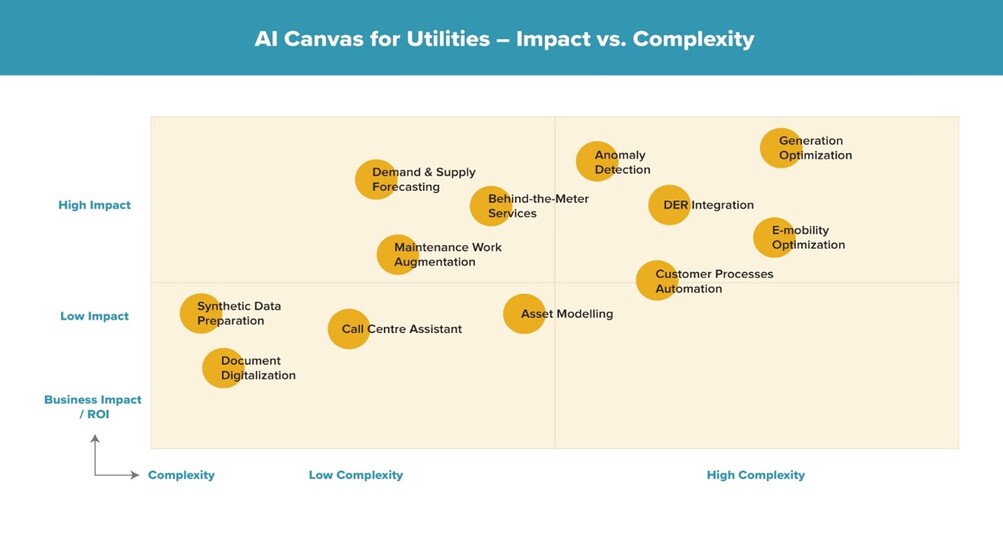The rise of GenAI has caused a scramble in every industry to quickly capitalize on this exciting new technology. In theory, GenAI can address numerous challenges faced by utilities, helping the industry navigate the energy transition and respond to changing customer preferences amid a rising cost-to-serve. But to date, use cases for utilities companies have been elusive.
Many utilities are approaching GenAI from a technology perspective, asking: “How can we begin?” However, this sets them up for failure. The more important question is: “Where should we begin?” The right approach must be domain-driven and business-first, identifying the business use cases and then using GenAI to drive business outcomes and transform into a utility of the future.
Breaking Down Utilities GenAI Use Cases
Many GenAI use cases will make an impact across the utilities landscape. Simple GenAI use cases like automated document processing and email responses can be implemented equally across electricity, gas, water, and waste management, and they can be applied in both internal and customer-facing contexts.
Across all asset types and utilities products, GenAI will refine the outputs of cognitive AI, machine learning, deep learning, and data science initiatives, making insights and predictions from these technologies more targeted and user-friendly. GenAI will help utilities more efficiently manage the software development cycle and will play an advanced role in areas like predictive maintenance for assets and demand forecasting across all products.
Some of the most impactful GenAI use cases will be more niche, driving value in areas such as:
- Grid optimization: GenAI will it enable digital assistants for grid operators that improve the speed and impact of their decisions when dispatching generators or taking renewable energy sources offline.
- AR asset maintenance: GenAI will translate asset information into AR environments that will advance remote and digitally augmented asset maintenance (and will similarly supercharge other Industry 4.0 technologies).
- Energy transition readiness: GenAI will synthesize data to aid in forecasting energy usage and renewable energy generation, thus playing a pivotal role in balancing supply and demand, reducing losses, enhancing grid stability, and optimizing distributed renewable generation.
- Customer billing: GenAI will deliver intelligent automation, responding to queries that were previously too complicated to automate. For example, GenAI will be able to automate responses to “high bill” enquiries, analyzing historical usage and previous charges to generate an explanation in language that the average consumer can understand.
Across many use case themes (see figure below), utilities have reason to be enthusiastic about the potential of GenAI.
 Locations
Locations




